Mosquitoes! They have been referred to as the most medically and economically destructive group of insects, due to their role in the transmission of disease-causing agents. They are responsible for the transmission of the agents of malaria, lymphatic filariasis, dirofilariasis, yellow fever, Chikingunya, dengue, West Nile, and many many others. Yet, they also play a very important role in freshwater ecosystems, as they are an important food source for freshwater invertebrates, fish, and birds. Safari released this mosquito life cycle in 2014 as part of the Safariology series, which features a number of life cycles (and luckily for me, most were insects). The adult from the set (and those from a couple other life cycle sets) was released solo in 2015 as part of the (now defunct) Hidden Kingdom Insects line. As a professional microbiologist, parasitologist, and entomologist, one can imagine how pleased I was for the release of this life cycle set!
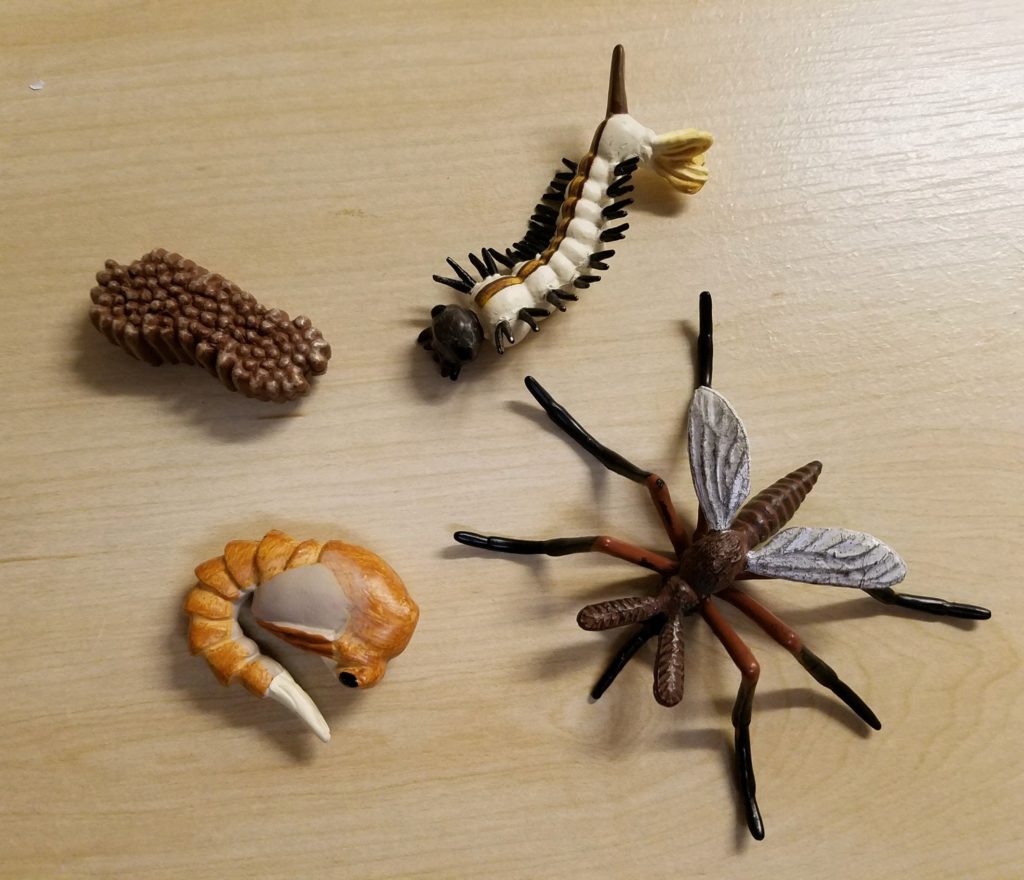
The species of mosquito was not identified by Safari, nor can it be deduced from the morphology of the figure. But based on the morphology of almost every stage, it is something in the subfamily Culicinae, ruling out Anopheles (the vector of Plasmodium, which causes malaria). If you are a stickler about scientific names on your figures and had to have a name assigned to this mosquito, genus Culex is probably the best option.
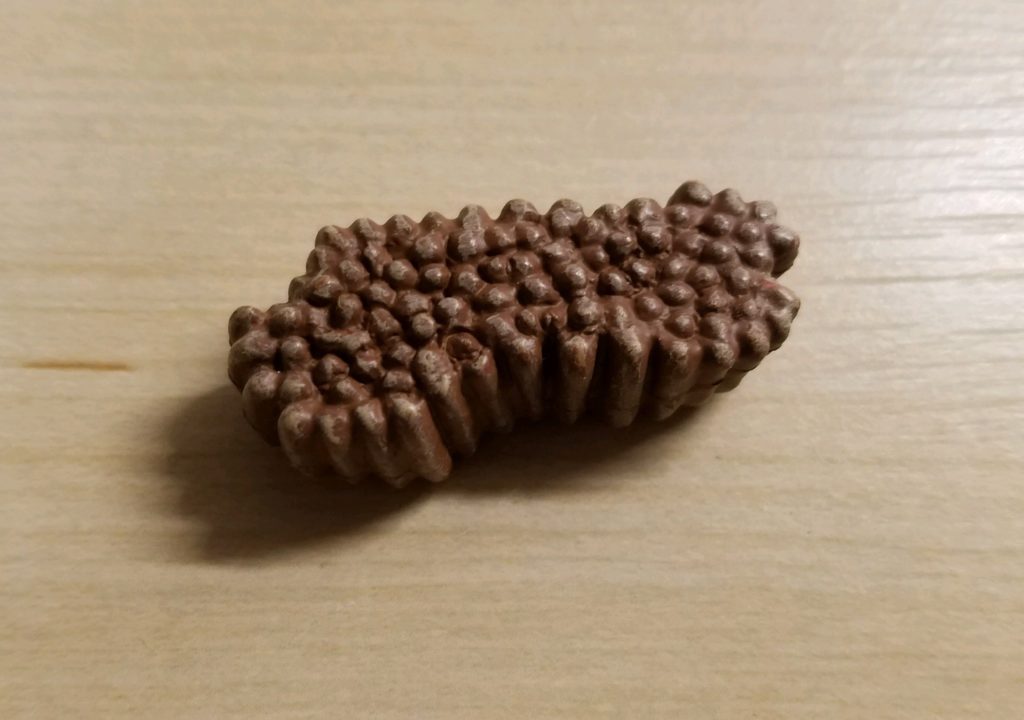
A well-fed, gravid female lays her eggs on the surface of stagnant water. She glues them together vertically, head side down, forming a floating ‘raft’ of eggs.
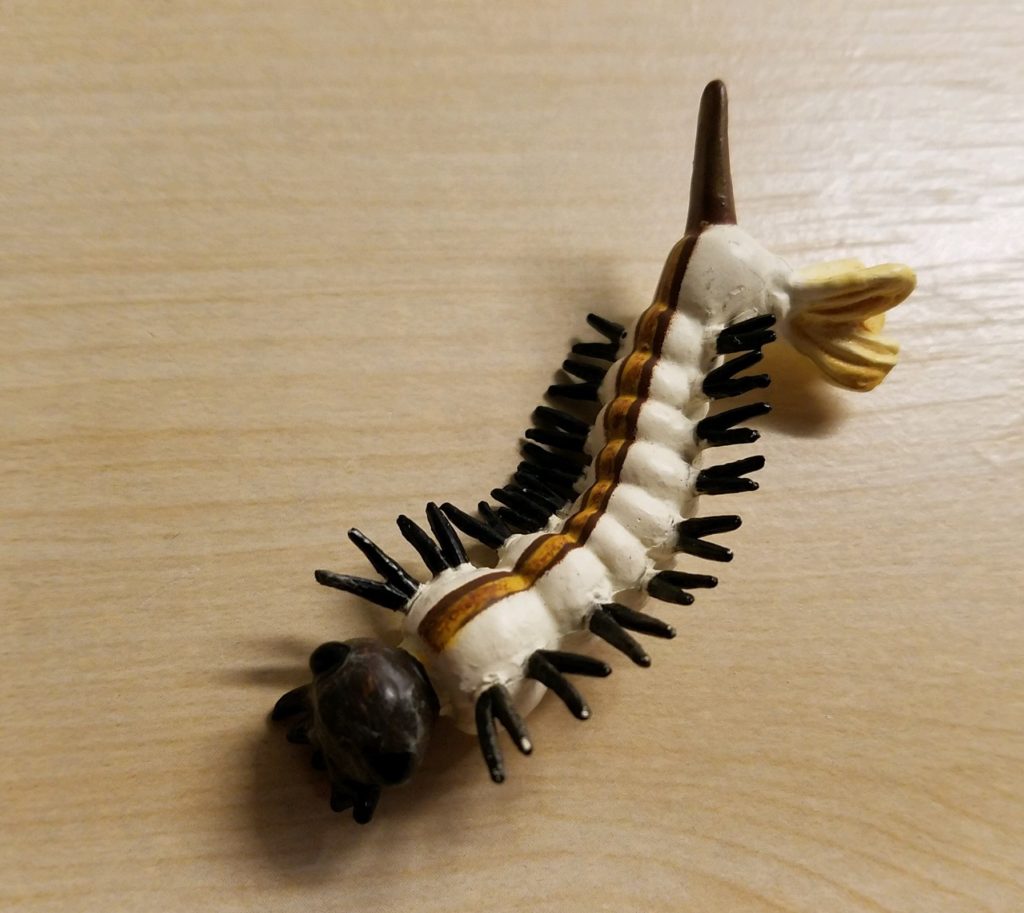
Within a few hours of oviposition, the eggs hatch, releasing a first-instar larva. The larvae will molt three times to become the mature, fourth-instar larvae, as seen in the figure above. The respiratory siphon on the posterior end is used for breathing while the larva stays submerged, feeding on microscopic organisms and plant debris in the water.
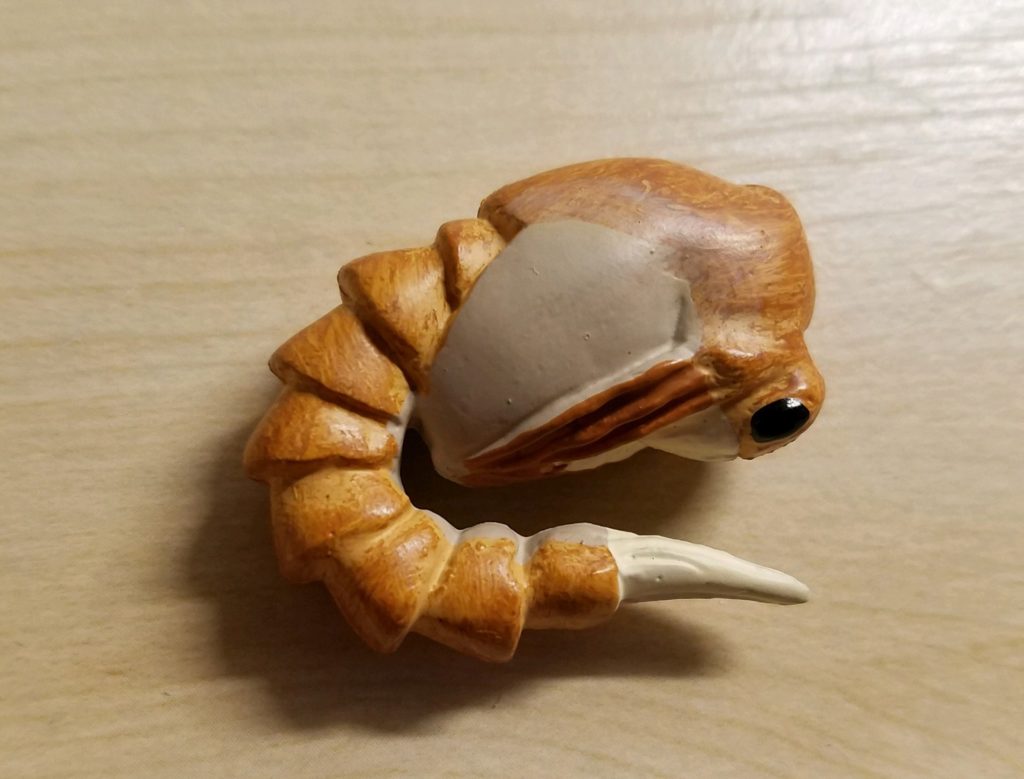
Mosquitoes are holometabolous insects, meaning they have a pupal stage between the larva and adult. Depending on the species, pupation can occur within days or a couple weeks. The mosquitoes do not feed in the pupal stage, but are still aquatic and still need to take in air from the environment. Pupae are active and capable of ‘swimming’ to avoid a predator, but must return to the surface of the water to breath.
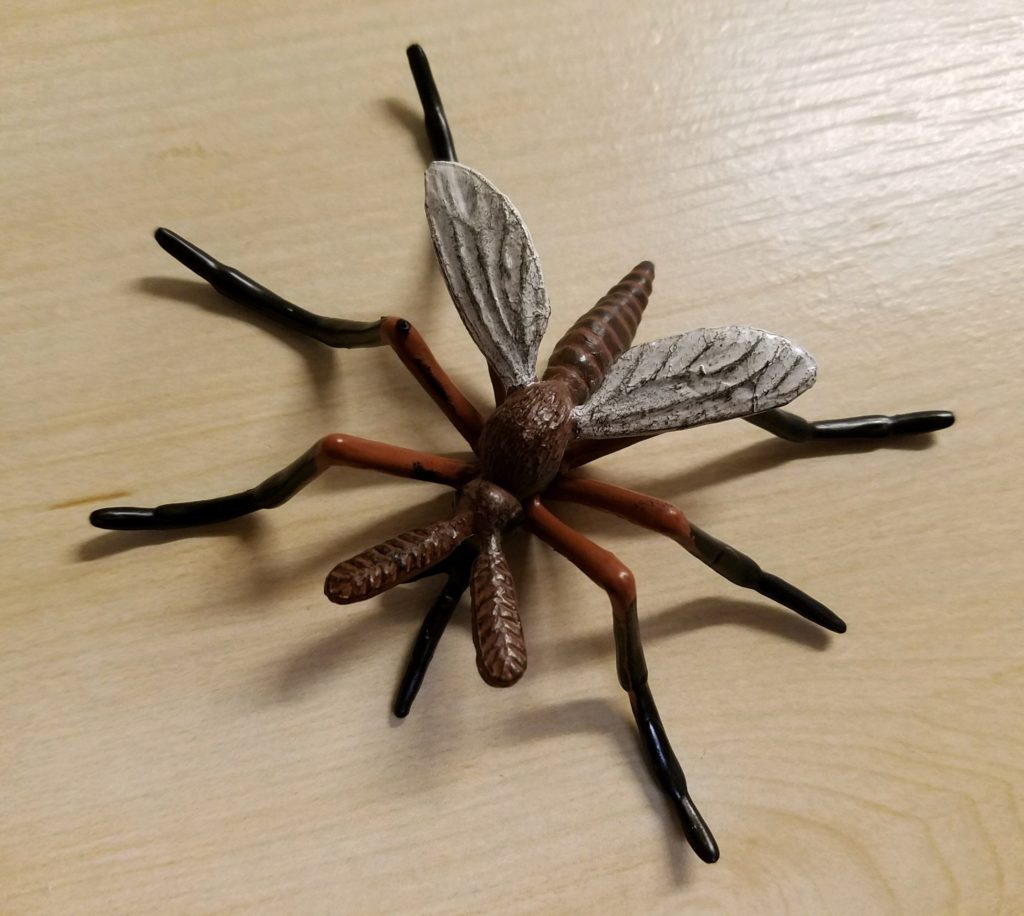
Pupation can last a day to weeks, and eventually the adult emerges. A freshly emerged adult quickly looks for a food source. Both males and females will feed on sugars from plants, but only the female sucks blood from a vertebrate host. The nutrition in the blood is required for egg production and laying. This adult mosquito figure is very generic. Like many insect figures, it is displayed flat, with its legs splayed outwards, causing it to take up a lot of surface area but not actual space (the maximum surface area taken up by this figure is 8.5 cm wide by 6.5 cm long). The figure would be so much better if the body was elevated off the ground in a more natural pose. The palps are short, again indicating it is a culicine. What is interesting, is that the antennae are quite plumose, suggesting this figure might be a male, and as such would not suck blood (however, I think the antennae are just exaggerated a little to prevent breakage of such delicate parts).
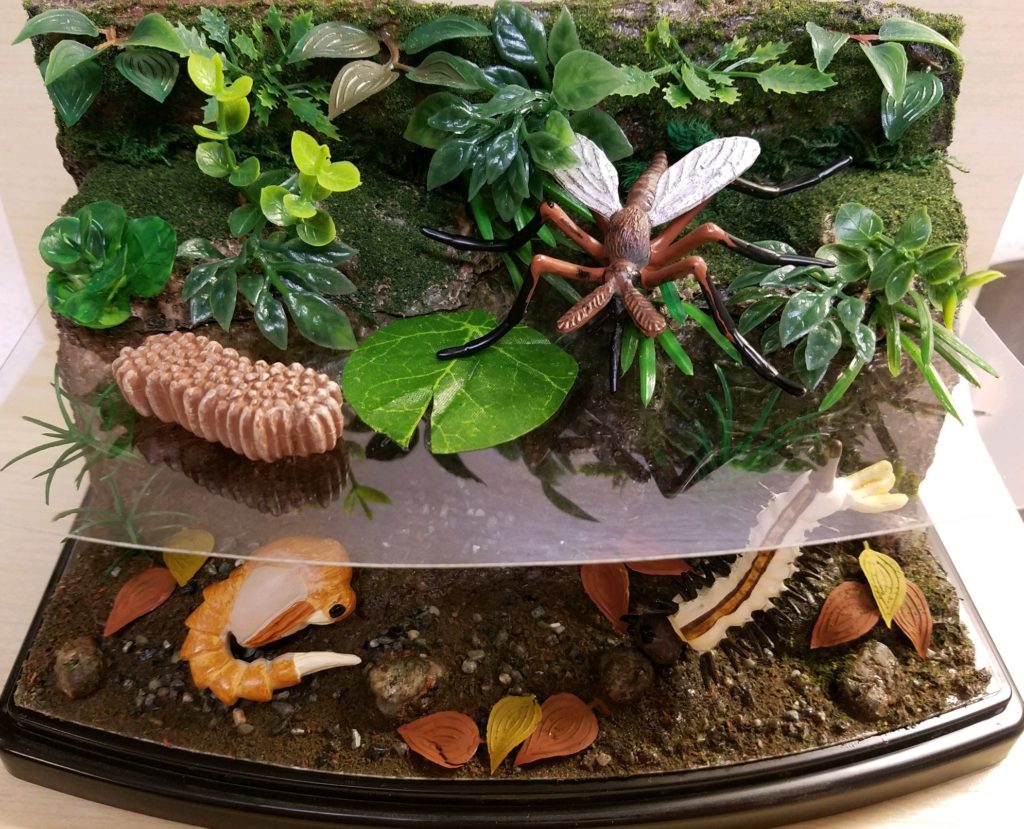
Overall, this set is a great educational tool, and can appeal to medical and public health educators as well as collectors, biologists, entomologists, and teachers. Some parts are small, and the adult’s legs are sharp (but not too hard), so this might not be the best set for small children. I don’t think Safari is doing life cycles any more, but I would love to see them follow this up with a tick life cycle 🙂
Disclaimer: links to Ebay and Amazon on the AnimalToyBlog are affiliate links, so we make a small commission if you use them. Thanks for supporting us!




What a great set of figures. I’ve seen other life cycle sets but never this one. Love the diorama you have them displayed on!
thanks Gwangi; I have four similar dioramas I purchased on YAJ with the help of Brett/Emiko (the others are woodland, coral reef, and creek/water seepage). The eastern grey squirrel I reviewed is also on one such diorama (woodland).
Companies really need to make more lifecycle sets.